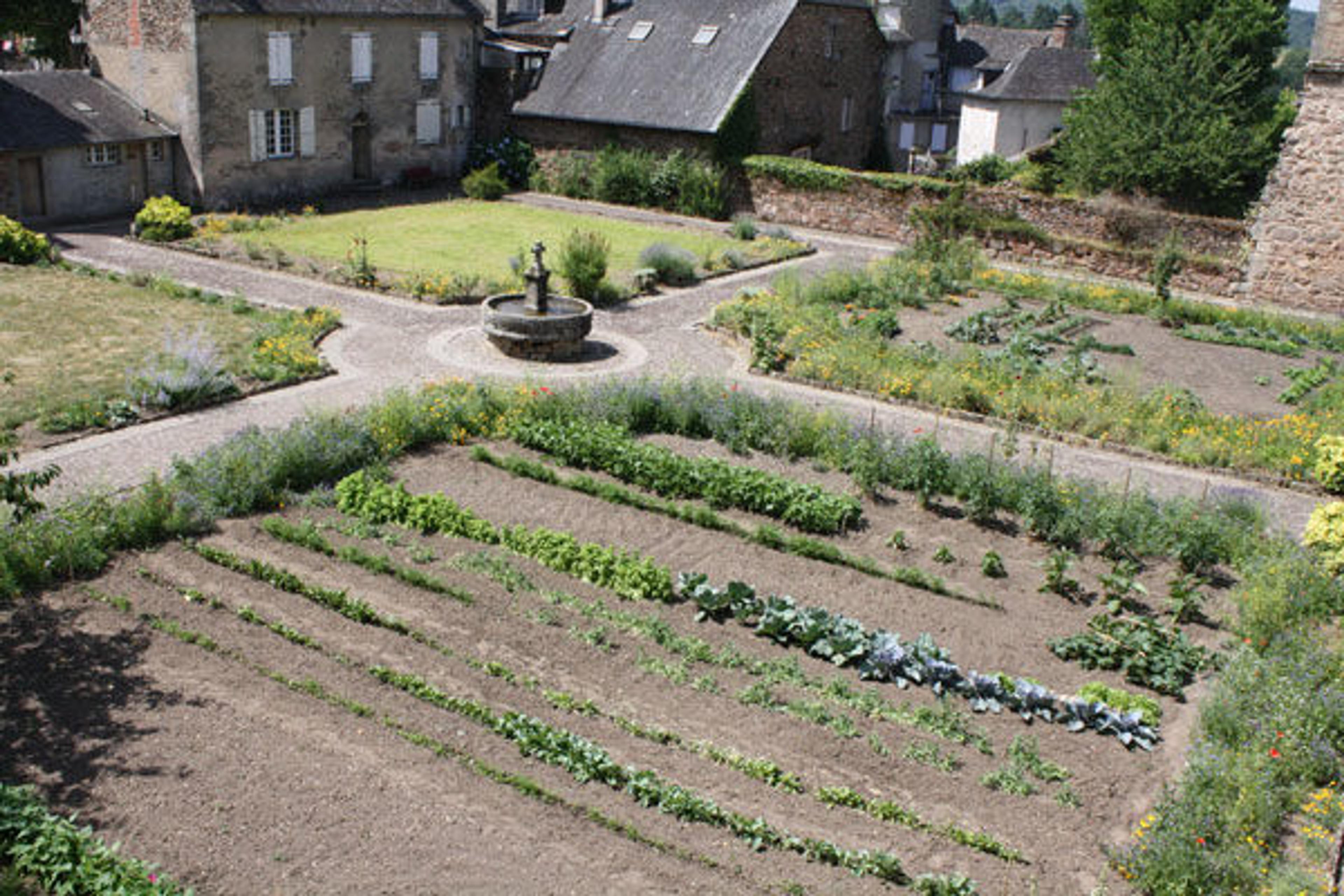
The cloister garden at Saint-Étienne d'Aubazine. Images courtesy of the author
«In the past few weeks, my colleagues have shared tales from their summer travels. This past summer, I went to France to visit several spectacular sites of Romanesque art and architecture with a group of fellow medieval-art historians.»
Admirers of the gardens at The Cloisters know very well the ways in which medieval people sought to tame nature: they cultivated plants; trained tree branches to grow in rigid, parallel rows; and built fountains to exploit water sources. In particular, The Cloisters' gardens give visitors a taste of how medieval monastic communities—sometimes located in out-of-the-way valleys, on mountain tops, and even at the edges of cliffs—transformed the natural landscape to make it work for them. On a sweltering day this past July, I had the incredible opportunity to explore a major feat of twelfth-century engineering carried out at one such monastery, Saint-Étienne d'Aubazine (or Obazine) in France's Corrèze department.
I went to Aubazine to examine its architecture. I hadn't known much about the site prior to visiting, and I learned that its monastery had once housed the orphanage in which Coco Chanel spent part of her childhood. Though it has been suggested that Chanel's style was in part derived from the simplicity of the garments worn by nuns and orphans alike, the aesthetic of austere elegance is also characteristic of Aubazine's twelfth-century church and chapter house.
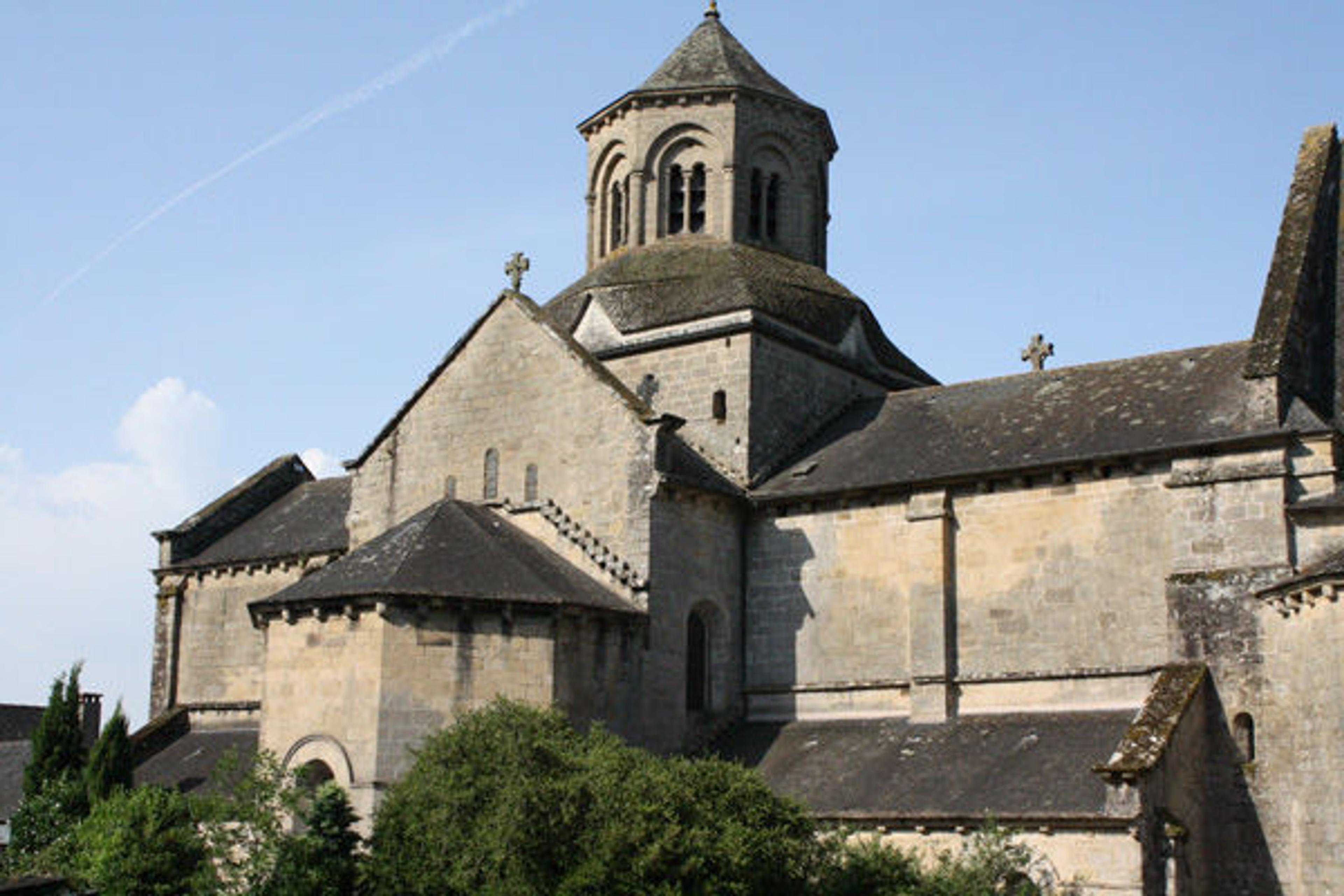
The church of Saint-Étienne d'Aubazine
The medieval monastic community at Aubazine belonged to the Cistercian order (today Cistercians are also known as Trappists), which advocated a stricter interpretation of the Benedictine rule. The Cistercians eschewed excessive ornamentation in the decoration of their churches, as evidenced by the clean lines and simple volumes of Aubazine's church interior.
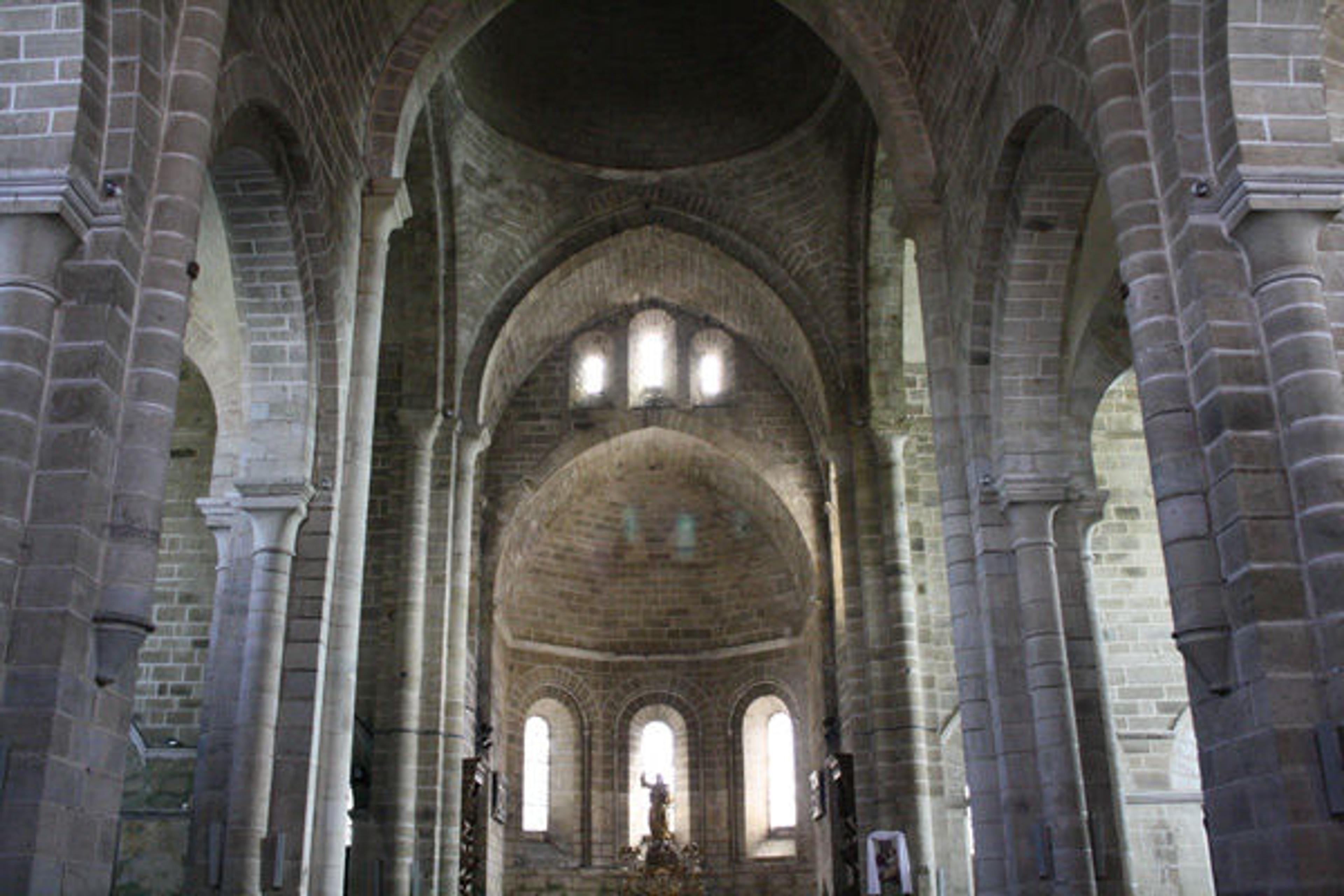
Interior of the church of Saint-Étienne d'Aubazine
The Cistercians also took St. Benedict's requirement that monks perform manual labor very seriously. Tasks such as farming and building were integral to a community's daily survival, though the monks were also prepared to modify the landscape in which they lived to carry out these tasks more efficiently.
The order particularly valued the availability of a running water source, and were known to divert rivers and streams in order to bring fresh water to their crops and living quarters. At Aubazine, which lies in a rocky landscape, the twelfth-century community of monks created a lengthy sloped canal that carried water from a hilltop stream directly to its gardens and kitchen.

The canal at Aubazine
I also hadn't known about the canal before I visited the church. However, with the temperature at an even one hundred degrees Fahrenheit on the day of our arrival, I jumped at the chance to explore the cool, shaded path that runs alongside it for a kilometer and a half. (Though, truth be told, medieval stone churches are also wonderful places for escaping summer heat.)
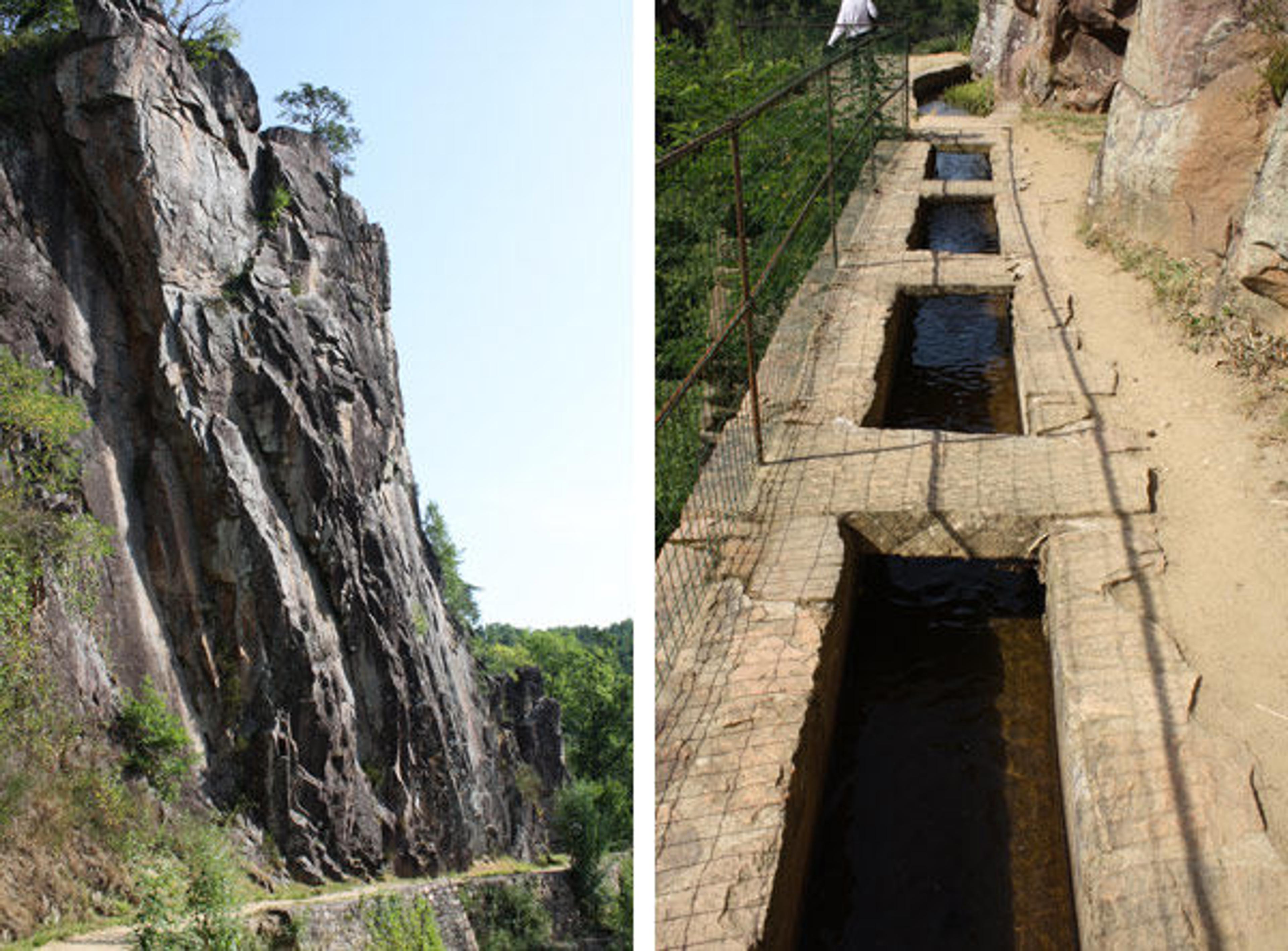
Left: The narrow canal and corresponding footpath run past many dramatic rock formations. Right: The canal at Aubazine
The canal system begins on a hill above the monastery, where it catches the cascade of a small waterfall. From there, it slopes downward at a gentle incline, tracing the rocky face of the hill. The channel itself is neither deep nor wide, but was sufficient for the gradual transport of water for the monastery's needs.
That this system survives after over eight hundred years of existence is a testament to the exacting and careful work of Aubazine's monks, who worked with limited tools to dig the trench and shore up the hillside with masonry. This is hard work with modern equipment; I can only imagine the back-breaking effort that went into this twelfth-century project. Just prior to my visit to Aubazine, I had gone to the abbey of Sainte-Foy de Conques, or Abbey Church of Saint Foy, for the first time, and its famous cloister capital depicting masons was fresh in my mind.
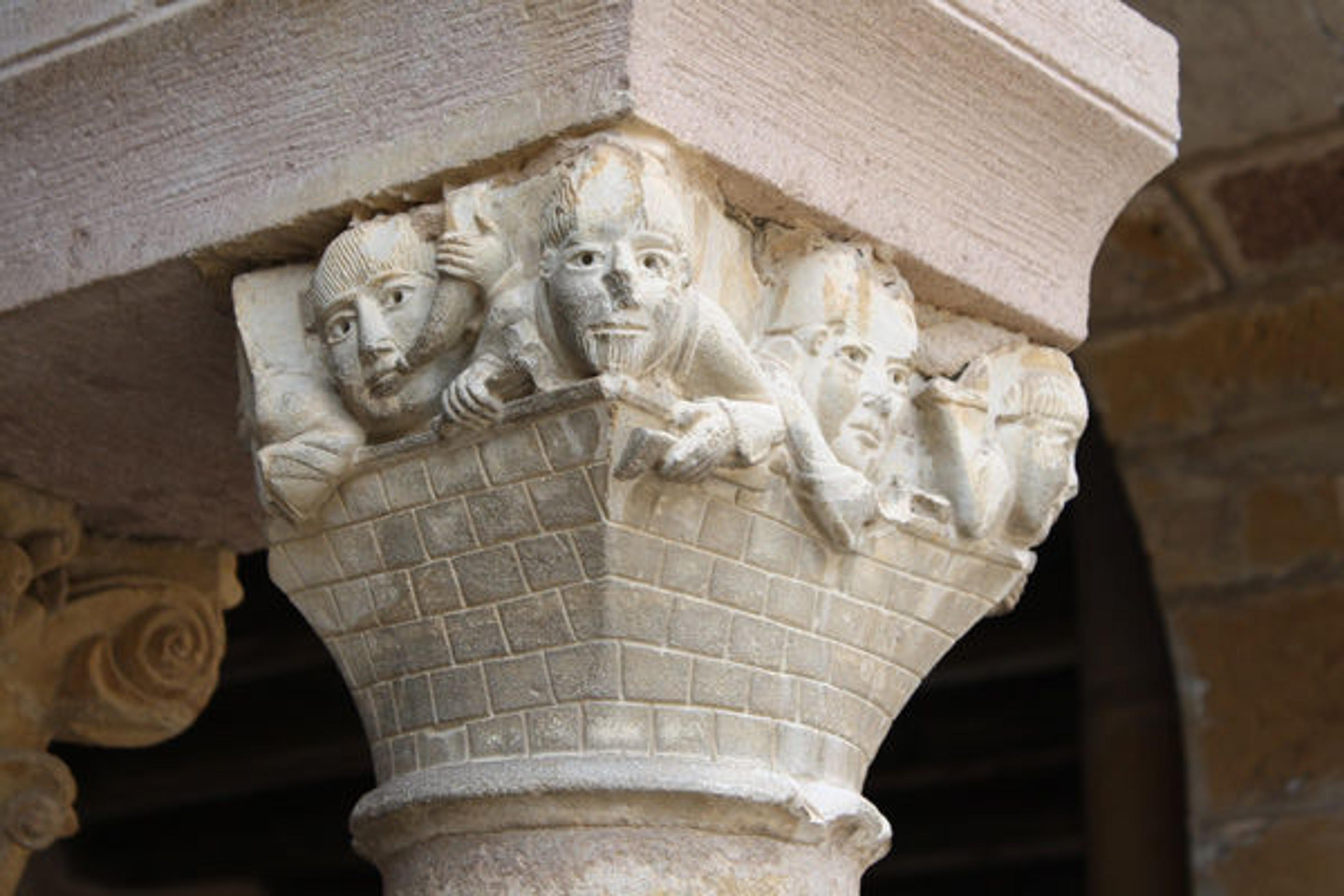
A capital from the cloister of Sainte-Foy de Conques depicting masons at work
The canal at Aubazine reveals the extent of monastic practicality. This, together with the community's relatively unadorned architecture, might suggest the monks were oblivious to the aesthetic appeal of nature. The magnificent tree decorating the thirteenth-century tomb of the church's founder, Saint Stephen, however, suggests otherwise.
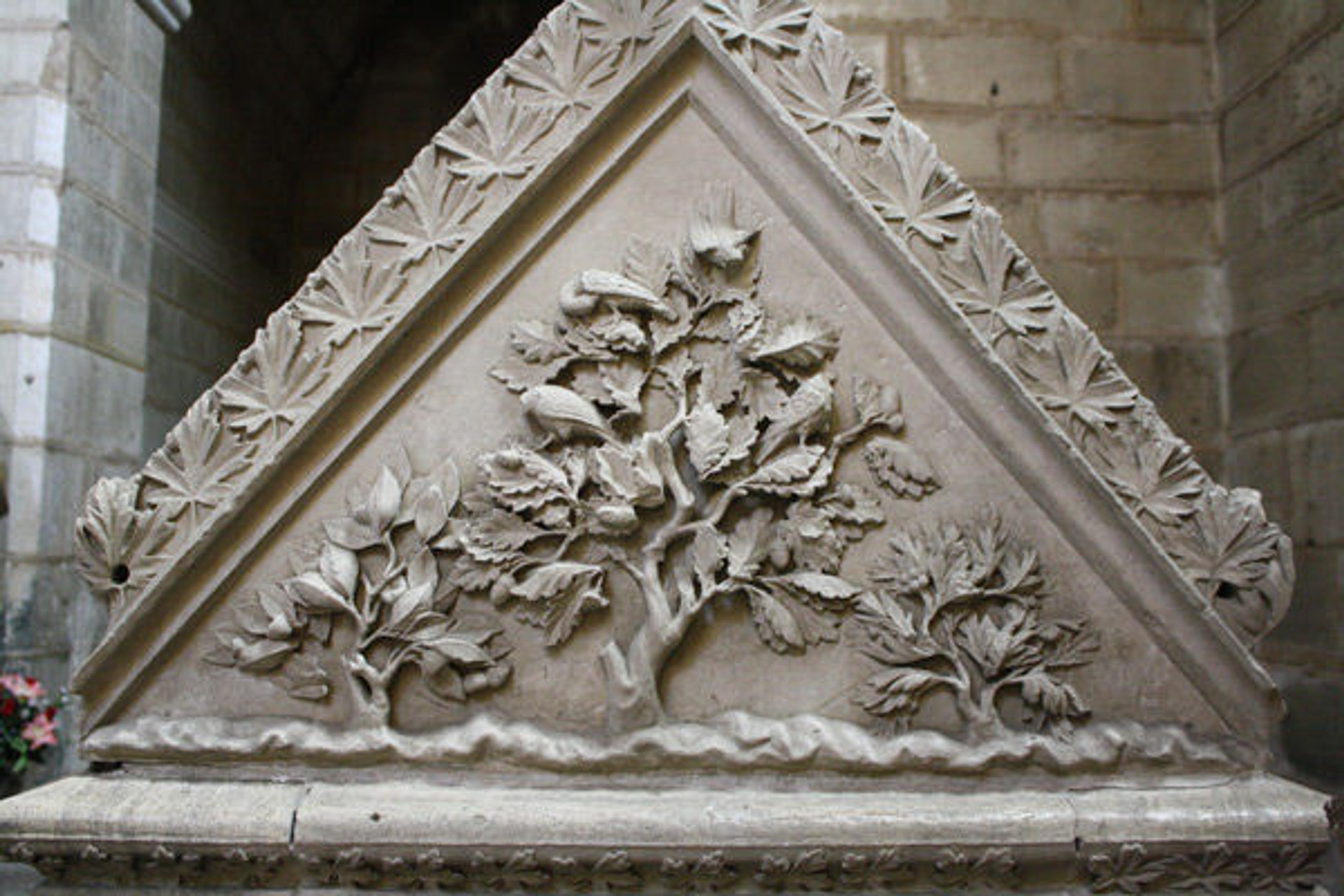
Detail from the thirteenth-century Tomb of Saint Stephen of Aubazine